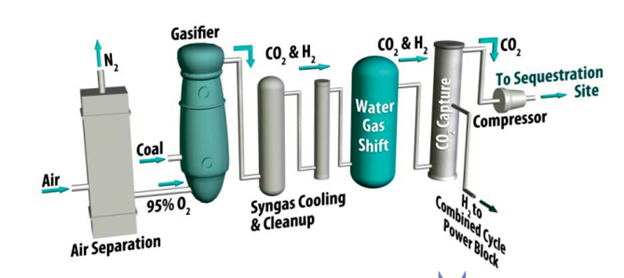
The Polymer Built for Pre-Combustion Pressure
One of the defining engineering challenges of the 21st century is capturing carbon dioxide efficiently and effectively. From fossil-fueled power plants to hydrogen production units, the need to separate and capture CO₂ from gas streams is intensifying. When CO2 is captured, traditional systems rely on amine solvents or cryogenic unit technologies, which have large structural footprints and are capital- and energy-intensive.
Membrane-based separation offers a compact, modular, and chemical-free approach. Using selective polymer films, membranes remove CO₂ out of exhaust or process gas streams under pressure differentials, eliminating the need for regeneration chemicals.
And in both post-combustion and pre-combustion contexts, one material is proving uniquely suited to handle the extremes: Celazole® PBI.
A Material Meant for Harsh Conditions
Common gas separation membranes based on polyacrylonitrile (PAN), polyether sulphone (PES), or polysulphone (PSU), with their significantly lower glass transition temperatures, can be compacted well before a membrane made with Celazole PBI. With a glass transition temperature of 427°C and proven thermal stability, polybenzimidazole (PBI) is well-suited for high-temperature gas separation conditions.
Its fully aromatic backbone tolerates heat and resists swelling, compaction, and hydrolysis. This makes PBI particularly effective in syngas streams, where hot hydrogen and CO₂ coexist alongside moisture and acidic gases, such as H₂S.

Hydrogen Purification and Pre-Combustion Capture
Hydrogen purification for pre-combustion CO₂ capture presents a demanding separation environment, typically involving temperatures above 200°C and pressures exceeding 30 bar. Under these conditions, many polymer membranes undergo thermal relaxation, plasticization, or chemical degradation, necessitating gas cooling, which in turn reduces process efficiency.
By contrast, extensive laboratory and pilot-scale evaluations have confirmed PBI’s performance under these high-temperature, high-pressure syngas conditions.
Membranes made from PBI have demonstrated:
- Thermal and chemical stability at 225 °C, maintaining gas separation performance in the presence of steam, CO₂, H₂, and trace contaminants
- Pressure tolerance to 130-160 psig sustained, and 200 psig for short-term
- Hydrogen recovery rates exceeding 99%, with CO₂ rejection above 90%, supporting efficient CO₂ capture and H₂ purification
- Long-term operational durability, with no observed degradation or selectivity loss over hundreds of hours of continuous use in situ in commercial settings
Selectivity Engineered at the Molecular Level
What makes PBI membranes so effective isn’t just their thermal resilience and inherent selectivity. Small and fast hydrogen permeates quickly through the polymer’s matrix. Larger gases like CO₂ or CH₄ are rejected by the membrane for capture or use.
Crosslinking technologies enable the tuning of membranes to enhance flexibility, flux, and selectivity.
Chemical modification of PBI membranes can help shrink free volume to optimize for H2/CO2 separations.

Meeting the Challenges of Flue Gas
While pre-combustion applications play to PBI’s strengths, the material is also gaining attention for post-combustion capture. Flue gas, composed mostly of nitrogen with a low concentration of CO₂, presents a different challenge: low partial pressure of CO₂ and large volumes.
To be successful, membranes must exhibit ultra-high CO₂ permeance while maintaining modest selectivity. Recently developed thin-film composite membranes, utilizing PBI as a support layer, have shown promise.
Field-Tested and Industry-Ready
PBI hollow fiber membranes, already popular in other separation applications, are now moving from lab-scale experiments to larger pilot projects and early-stage commercial carbon capture programs.
Pilot systems, including those tested by SRI International and Los Alamos National Laboratory, have demonstrated stable gas separation over 1,000+ hours in high-temperature syngas environments.
These results confirm real-world readiness:
- Proven stability at higher temperatures and pressures without degradation
- No need for cooling or pretreatment, simplifying system architecture and reducing energy load
- Successful operation in syngas from coal gasification, confirming chemical and thermal durability
Ongoing advancements are expanding capabilities:
- Thin-film polymer composites designed for CO₂/N₂ support layers in post-combustion capture
- Mixed-matrix membranes integrating inorganic fillers
Need Professional Help?
As concerns about decarbonization increase, membrane technologies are gaining more attention, and Celazole® PBI is at the forefront. With its exceptional thermal stability, chemical resistance, and selectivity, PBI offers reliable performance in situations where other materials might fall short.
PBI Performance offers a high-performance polybenzimidazole (PBI) solution, a main material for advanced membranes in carbon capture. Known for its thermal stability, chemical resistance, and strength, it enables membrane makers to create systems that withstand the harsh conditions of CO₂ separation and gas purification.
Although we do not manufacture finished membranes, our polymer solution is an important permitting material trusted by developers working to meet the demands of next-generation carbon capture applications.
Reach out to PBI Performance Products to request a sample, schedule a technical consultation, or find a commercial channel to deliver a PBI product for your separation needs.





